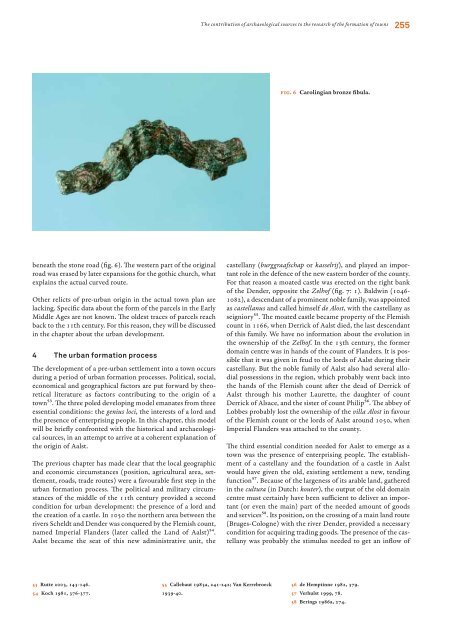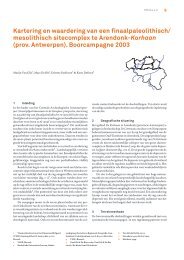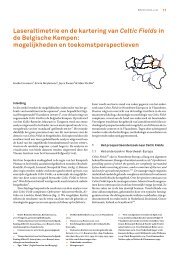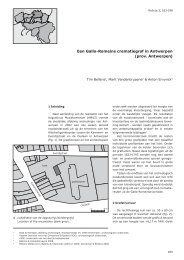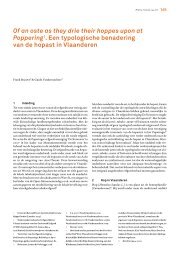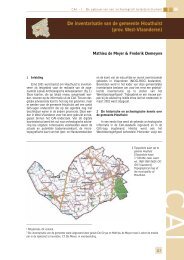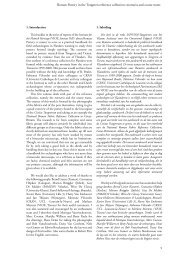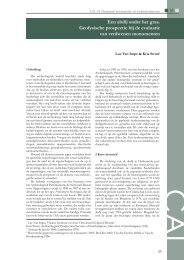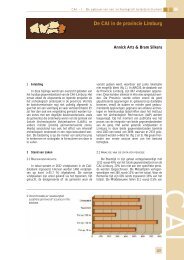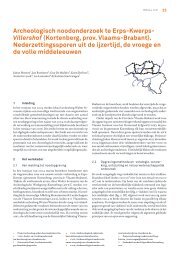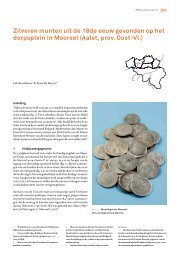Exchanging Medieval Material Culture Studies on archaeology and ...
Exchanging Medieval Material Culture Studies on archaeology and ...
Exchanging Medieval Material Culture Studies on archaeology and ...
You also want an ePaper? Increase the reach of your titles
YUMPU automatically turns print PDFs into web optimized ePapers that Google loves.
eneath the st<strong>on</strong>e road (fi g. 6). Th e western part of the original<br />
road was erased by later expansi<strong>on</strong>s for the gothic church, what<br />
explains the actual curved route.<br />
Other relicts of pre-urban origin in the actual town plan are<br />
lacking. Specifi c data about the form of the parcels in the Early<br />
Middle Ages are not known. Th e oldest traces of parcels reach<br />
back to the 11th century. For this reas<strong>on</strong>, they will be discussed<br />
in the chapter about the urban development.<br />
4 The urban formati<strong>on</strong> process<br />
Th e development of a pre-urban settlement into a town occurs<br />
during a period of urban formati<strong>on</strong> processes. Political, social,<br />
ec<strong>on</strong>omical <strong>and</strong> geographical factors are put forward by theoretical<br />
literature as factors c<strong>on</strong>tributing to the origin of a<br />
town53. Th e three poled developing model emanates from three<br />
essential c<strong>on</strong>diti<strong>on</strong>s: the genius loci, the interests of a lord <strong>and</strong><br />
the presence of enterprising people. In this chapter, this model<br />
will be briefl y c<strong>on</strong>fr<strong>on</strong>ted with the historical <strong>and</strong> archaeological<br />
sources, in an attempt to arrive at a coherent explanati<strong>on</strong> of<br />
the origin of Aalst.<br />
Th e previous chapter has made clear that the local geographic<br />
<strong>and</strong> ec<strong>on</strong>omic circumstances (positi<strong>on</strong>, agricultural area, settlement,<br />
roads, trade routes) were a favourable fi rst step in the<br />
urban formati<strong>on</strong> process. Th e political <strong>and</strong> military circumstances<br />
of the middle of the 11th century provided a sec<strong>on</strong>d<br />
c<strong>on</strong>diti<strong>on</strong> for urban development: the presence of a lord <strong>and</strong><br />
the creati<strong>on</strong> of a castle. In 1050 the northern area between the<br />
rivers Scheldt <strong>and</strong> Dender was c<strong>on</strong>quered by the Flemish count,<br />
named Imperial Fl<strong>and</strong>ers (later called the L<strong>and</strong> of Aalst)54.<br />
Aalst became the seat of this new administrative unit, the<br />
53 Rutte 2003, 143-146.<br />
54 Koch 1981, 376-377.<br />
The c<strong>on</strong>tributi<strong>on</strong> of archaeological sources to the research of the formati<strong>on</strong> of towns 255<br />
55 Callebaut 1983a, 241-242; Van Kerrebroeck<br />
1939-40.<br />
Fig. 6 Carolingian br<strong>on</strong>ze fi bula.<br />
castellany (burggraafschap or kasselrij), <strong>and</strong> played an important<br />
role in the defence of the new eastern border of the county.<br />
For that reas<strong>on</strong> a moated castle was erected <strong>on</strong> the right bank<br />
of the Dender, opposite the Zelhof (fi g. 7: 1). Baldwin (1046-<br />
1082), a descendant of a prominent noble family, was appointed<br />
as castellanus <strong>and</strong> called himself de Alost, with the castellany as<br />
seigniory55. Th e moated castle became property of the Flemish<br />
count in 1166, when Derrick of Aalst died, the last descendant<br />
of this family. We have no informati<strong>on</strong> about the evoluti<strong>on</strong> in<br />
the ownership of the Zelhof. In the 13th century, the former<br />
domain centre was in h<strong>and</strong>s of the count of Fl<strong>and</strong>ers. It is possible<br />
that it was given in feud to the lords of Aalst during their<br />
castellany. But the noble family of Aalst also had several allodial<br />
possessi<strong>on</strong>s in the regi<strong>on</strong>, which probably went back into<br />
the h<strong>and</strong>s of the Flemish count aft er the dead of Derrick of<br />
Aalst through his mother Laurette, the daughter of count<br />
Derrick of Alsace, <strong>and</strong> the sister of count Philip56. Th e abbey of<br />
Lobbes probably lost the ownership of the villa Alost in favour<br />
of the Flemish count or the lords of Aalst around 1050, when<br />
Imperial Fl<strong>and</strong>ers was attached to the county.<br />
Th e third essential c<strong>on</strong>diti<strong>on</strong> needed for Aalst to emerge as a<br />
town was the presence of enterprising people. Th e establishment<br />
of a castellany <strong>and</strong> the foundati<strong>on</strong> of a castle in Aalst<br />
would have given the old, existing settlement a new, tending<br />
functi<strong>on</strong>57. Because of the largeness of its arable l<strong>and</strong>, gathered<br />
in the cultura (in Dutch: kouter), the output of the old domain<br />
centre must certainly have been suffi cient to deliver an important<br />
(or even the main) part of the needed amount of goods<br />
<strong>and</strong> services58. Its positi<strong>on</strong>, <strong>on</strong> the crossing of a main l<strong>and</strong> route<br />
(Bruges-Cologne) with the river Dender, provided a necessary<br />
c<strong>on</strong>diti<strong>on</strong> for acquiring trading goods. Th e presence of the castellany<br />
was probably the stimulus needed to get an infl ow of<br />
56 de Hemptinne 1982, 379.<br />
57 Verhulst 1999, 78.<br />
58 Berings 1986a, 274.


